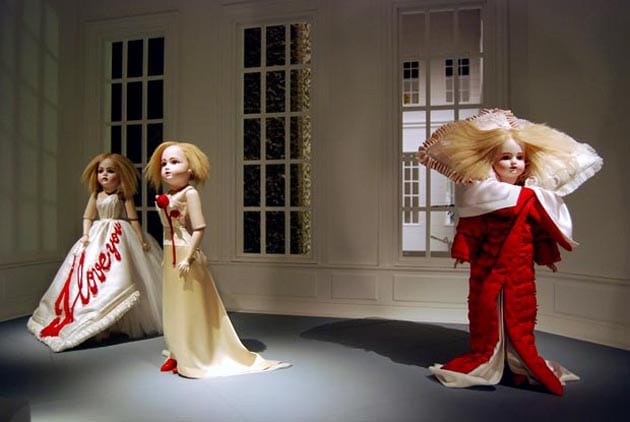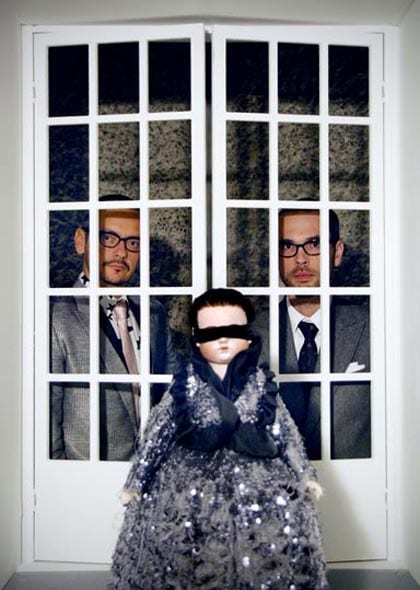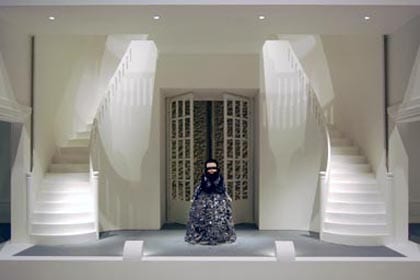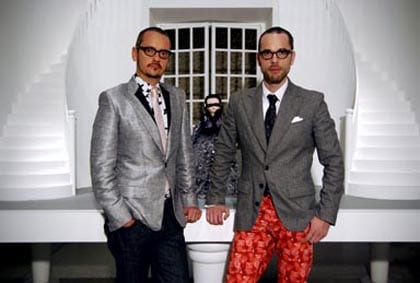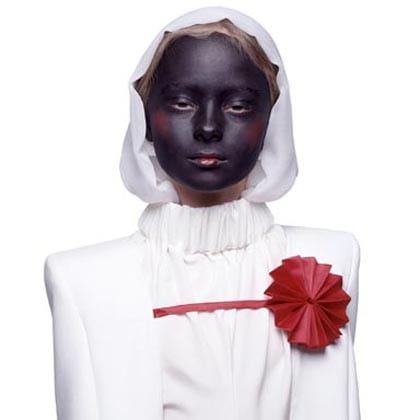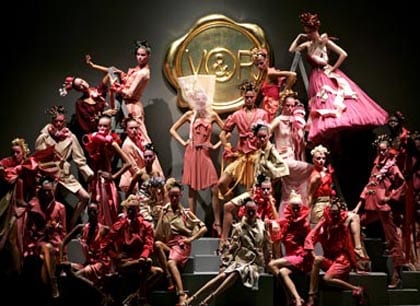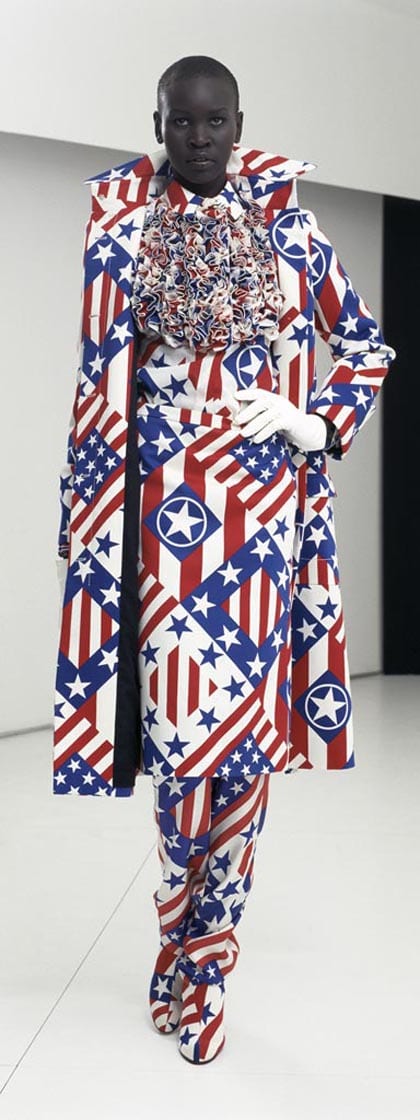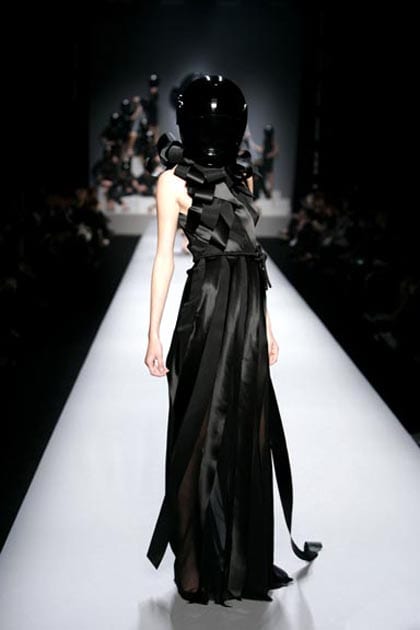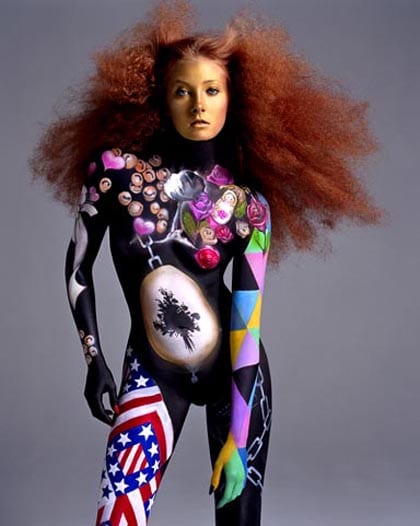|
|
||
|
Does fashion belong in a gallery? This was the topic of one of the debates running alongside the House of Viktor & Rolf exhibition at the Barbican. The question is vital as there is an inherent contradiction in displaying the seasonally changing trends of fashion in the static environment of a gallery. Viktor & Rolf is a case in point, with a 15-year career built around theatricality and showmanship. Arriving by car in Paris, chauffeured by Viktor’s father after graduating from Academy of the Arts in Arnhem, they assisted in the studios of Martin Margiela and Jean Collona while their own weird and wonderful world of couture extravaganzas started taking shape in their shared bedsit. This is where the exhibition commences, in 1993 with a grey wool jersey evening gown consisting of layer upon layer of coarse fabric, at the same time distorting and enhancing the wearer’s body, a net of sequins reining in the expansive volume.
The dress makes two important points about the practice of Viktor & Rolf. First of all it sets out a silhouette that they have returned to again and again: that which conceals rather than reveals, restricts instead of setting free. Secondly it states their position with the fashion industry. As the caption reads: “The collection’s extreme silhouettes and multiple layers […] were an expression of the alienation they experienced in ‘The City of Fashion’.” Their struggle to be accepted and celebrated by the fashion industry while simultaneously criticising its fast pace and commercialism – a contradiction that the exhibition repeats again and again, from Strike in March 1996, when Viktor & Rolf flyposted Paris with their rebellious message, to their latest collection, named simply “No”. Here the word “No” breaks out of a well-tailored tweed coat, as if the cloth has a life of its own, protesting against its destiny to be made into something as ephemeral as fashion, a fleeting trend.
The exhibition, classified a retrospective, takes us through season after season of show-stopping pieces and outstanding craftsmanship that highlight the genius with which Viktor & Rolf’s ideas are realised. All of the looks that are now accepted into fashion’s hall of fame are here to be examined in detail: the Russian Doll collection, where a model is dressed in layer upon layer of garments until only the top of her head is visible, and Bedtime Story, where bedclothes, including pillows, duvets and throws are incorporated into the design of the dresses. It has often been asked of Viktor & Rolf if they are designers or artists. Their first collections, like L’Hiver de L’Amour, Launch and L’Apparence du Vide, all on display here, were promoted in the settings of galleries rather than as catwalk shows. Walking through this awe-inspiring display of fanciful concepts it becomes apparent that whereas the designers that Viktor & Rolf quote as inspiration, such as Balenciaga and Elsa Schiaparelli, pushed the boundaries of women’s clothing, but ultimately what Viktor & Rolf are doing is pushing the limits of their own expression, concerned with themselves and their own position in the world of fashion rather than the women (and lately men) they dress.
The centrepiece of the Barbican exhibit is a doll’s house designed by Siebo Tettero, who also designed their offices in Amsterdam and their stores in Milan, Dubai and Moscow. It is six metres high and populated by 54 specially designed porcelain dolls, wearing perfect miniature versions of all the dresses in the exhibition, provoking the feeling that the Barbican Art Gallery is a 1:1 version of the same. And instead of standard museum mannequins, the ones in The House of Viktor & Rolf are exchanged for life-sized porcelain dolls, provoking an eerie feel of times past. This is the real strength of the exhibition: it doesn’t try to make the fashion come alive but is accepting of the fact that these garments have long seized to be fashion, they are instead references of the past, remnants of something that once was and might be again. But until then they are neatly tucked away in this cabinet of curiosities while the puppet masters are scheming their next move.
|
Image Lyndon Douglas courtesy of Barbican Art Gallery
Words Johanna Agerman |
|
|
||

